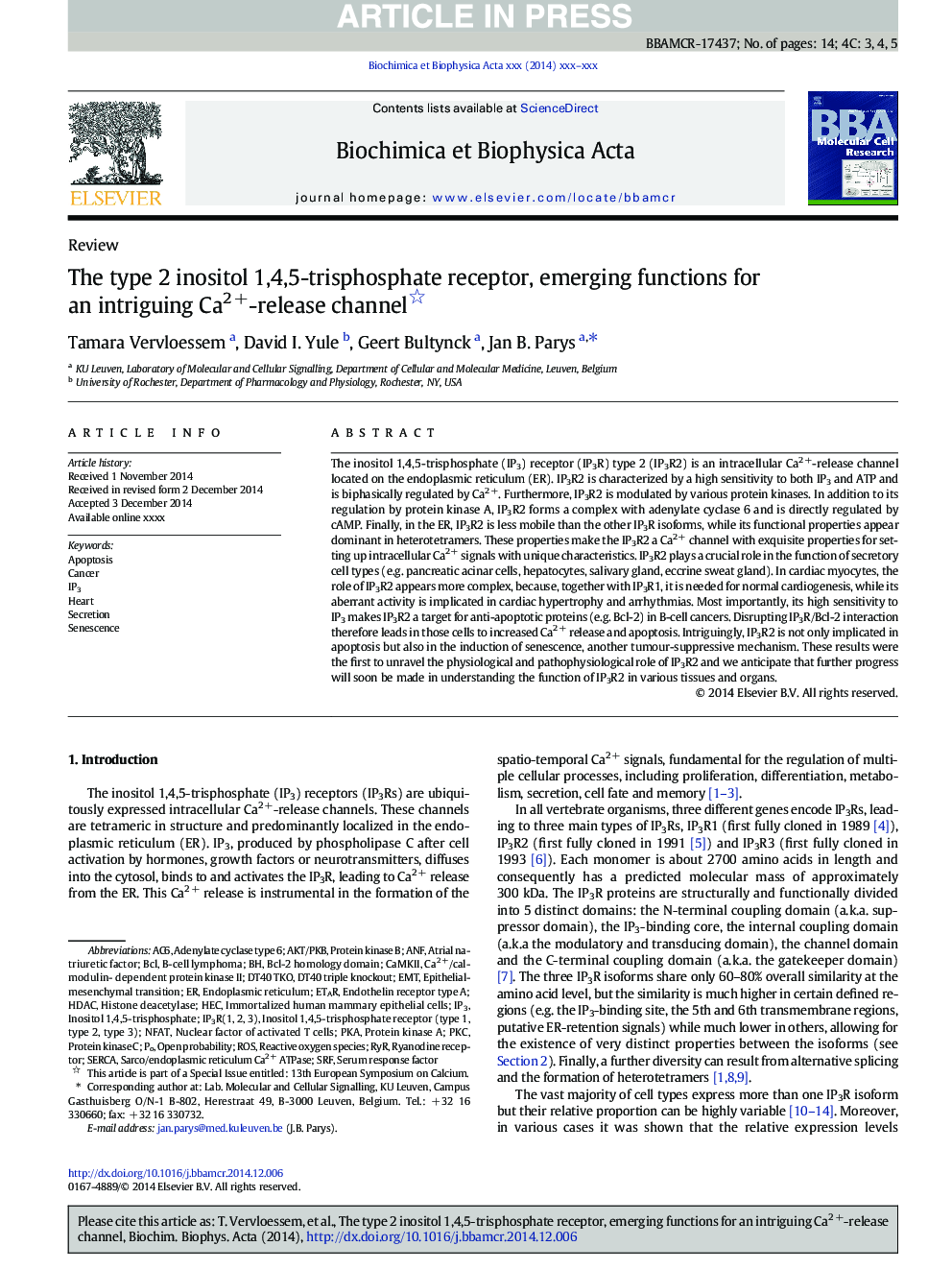| Article ID | Journal | Published Year | Pages | File Type |
|---|---|---|---|---|
| 10801885 | Biochimica et Biophysica Acta (BBA) - Molecular Cell Research | 2005 | 14 Pages |
Abstract
The inositol 1,4,5-trisphosphate (IP3) receptor (IP3R) type 2 (IP3R2) is an intracellular Ca2Â +-release channel located on the endoplasmic reticulum (ER). IP3R2 is characterized by a high sensitivity to both IP3 and ATP and is biphasically regulated by Ca2Â +. Furthermore, IP3R2 is modulated by various protein kinases. In addition to its regulation by protein kinase A, IP3R2 forms a complex with adenylate cyclase 6 and is directly regulated by cAMP. Finally, in the ER, IP3R2 is less mobile than the other IP3R isoforms, while its functional properties appear dominant in heterotetramers. These properties make the IP3R2 a Ca2Â + channel with exquisite properties for setting up intracellular Ca2Â + signals with unique characteristics. IP3R2 plays a crucial role in the function of secretory cell types (e.g. pancreatic acinar cells, hepatocytes, salivary gland, eccrine sweat gland). In cardiac myocytes, the role of IP3R2 appears more complex, because, together with IP3R1, it is needed for normal cardiogenesis, while its aberrant activity is implicated in cardiac hypertrophy and arrhythmias. Most importantly, its high sensitivity to IP3 makes IP3R2 a target for anti-apoptotic proteins (e.g. Bcl-2) in B-cell cancers. Disrupting IP3R/Bcl-2 interaction therefore leads in those cells to increased Ca2Â + release and apoptosis. Intriguingly, IP3R2 is not only implicated in apoptosis but also in the induction of senescence, another tumour-suppressive mechanism. These results were the first to unravel the physiological and pathophysiological role of IP3R2 and we anticipate that further progress will soon be made in understanding the function of IP3R2 in various tissues and organs.
Keywords
CaMKIIANFBclPKCETARRyRIP3pKaSRFHDACAC6NFATsarco/endoplasmic reticulum Ca2 + ATPaseHECCa2 +/calmodulin-dependent protein kinase IIinositol 1,4,5-trisphosphateROSAkt/PKBopen probabilitySecretionEMTApoptosisBcl-2 homology domainCancerendoplasmic reticulumNuclear Factor of Activated T Cellsatrial natriuretic factorserum response factorSERCAHeartB-cell lymphomahistone deacetylaseprotein kinase Aprotein kinase BProtein kinase CSenescenceEpithelial-mesenchymal transitionReactive oxygen speciesendothelin receptor type ARyanodine receptor
Related Topics
Life Sciences
Biochemistry, Genetics and Molecular Biology
Biochemistry
Authors
Tamara Vervloessem, David I. Yule, Geert Bultynck, Jan B. Parys,
